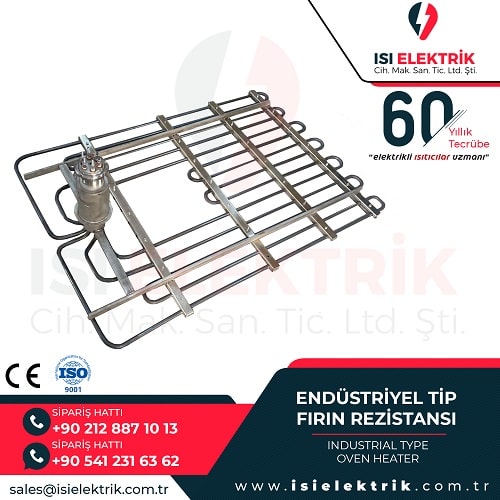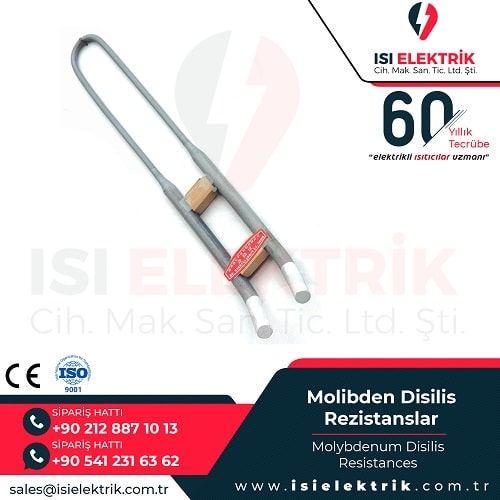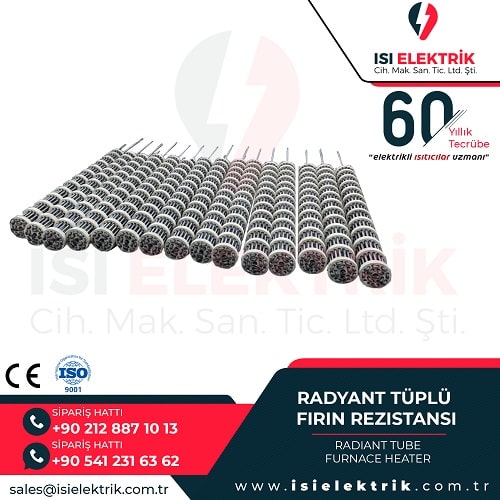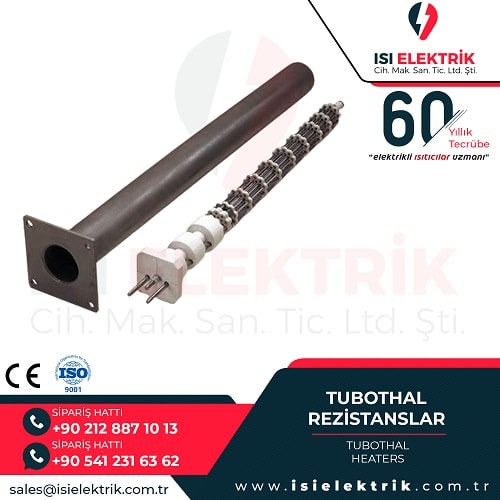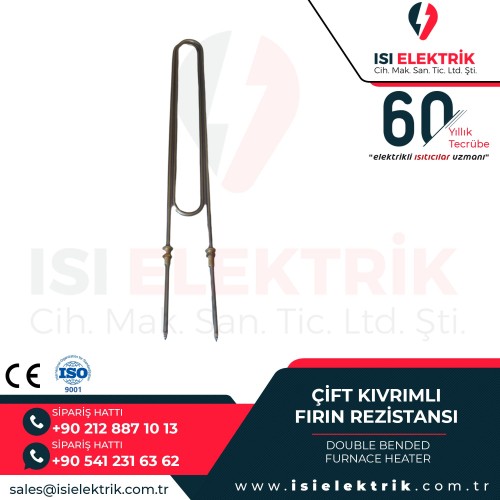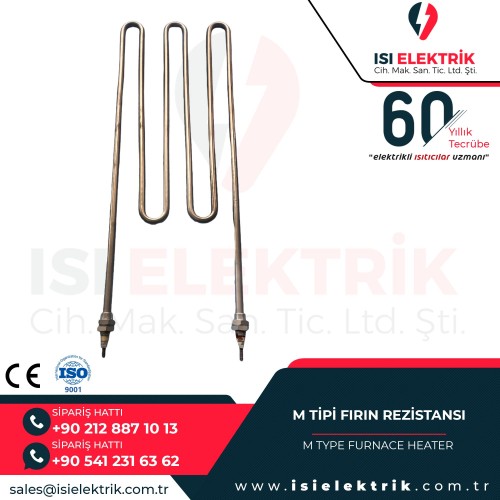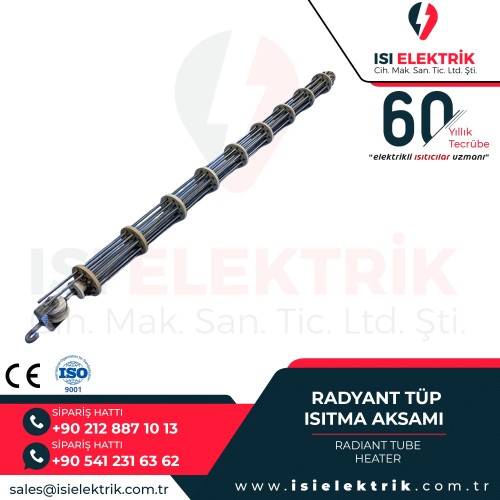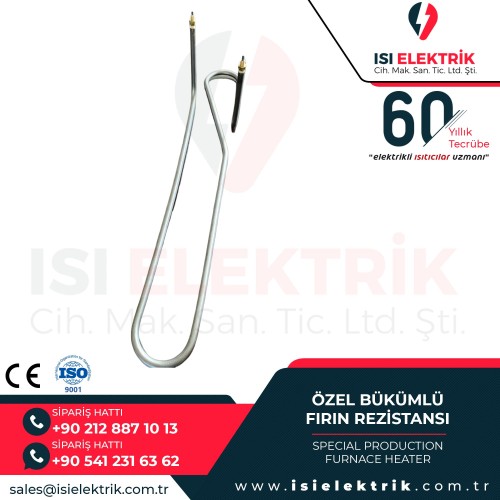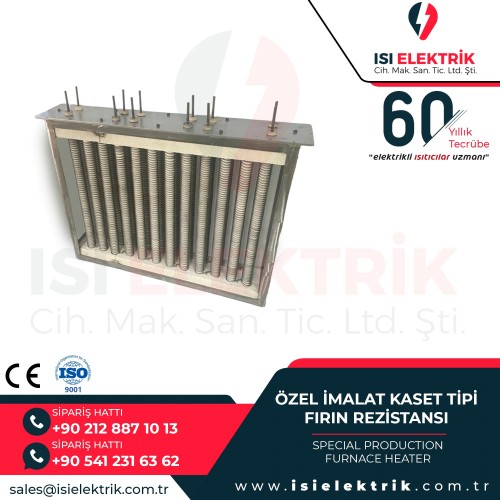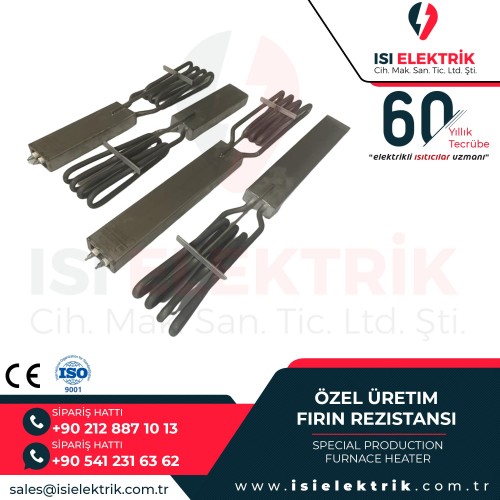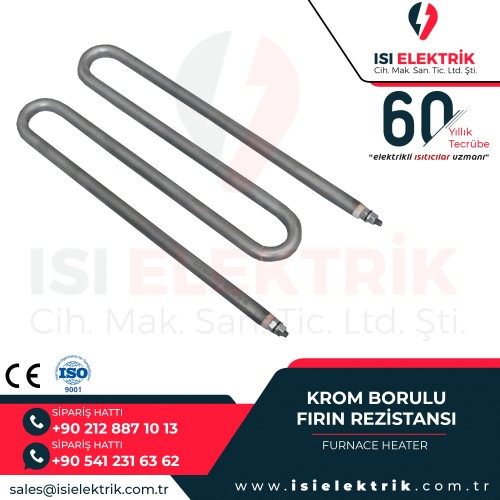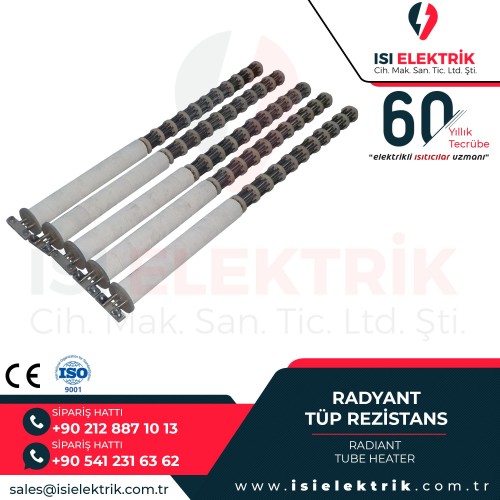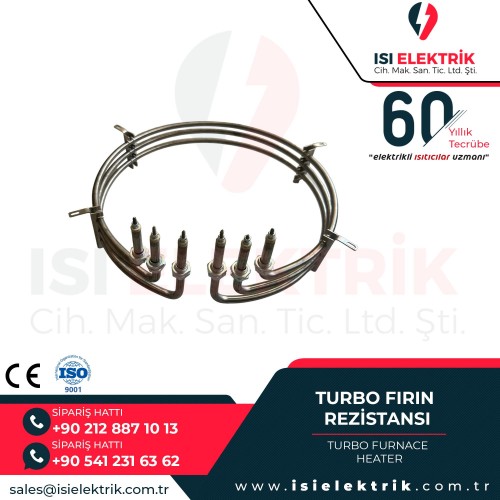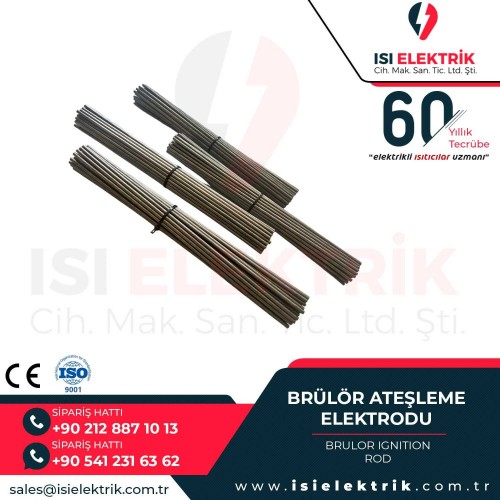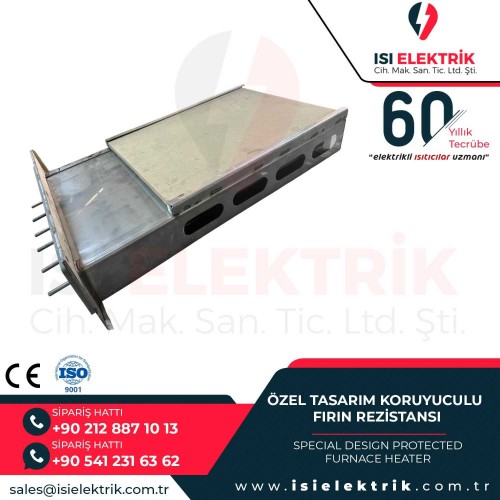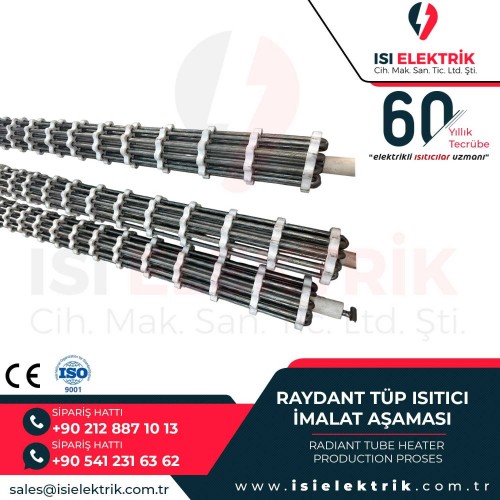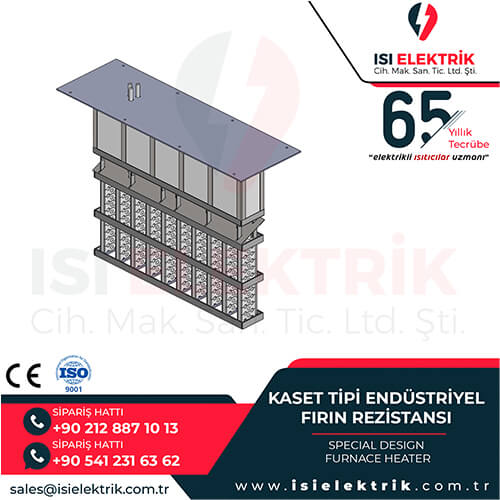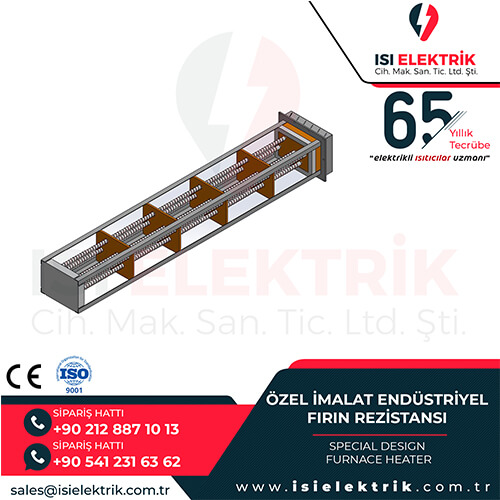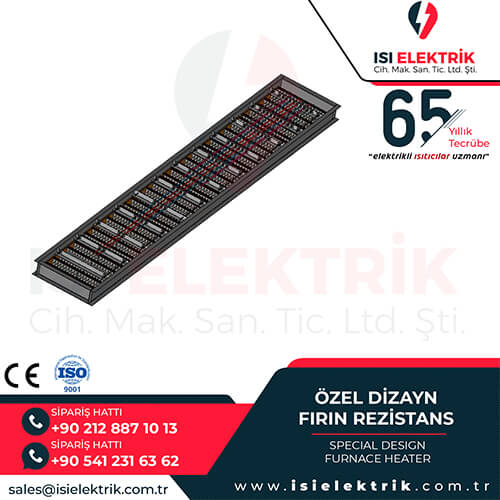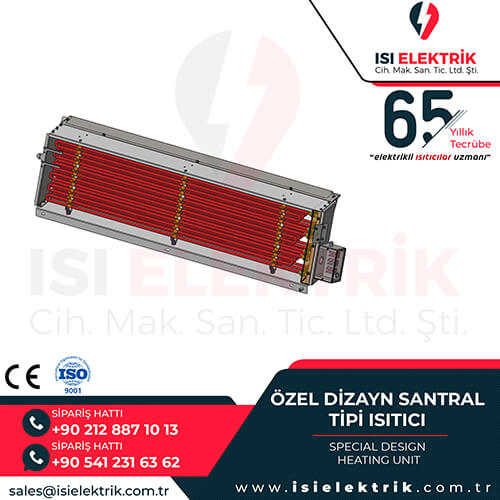Industrial Furnace Heaters
Industrial furnace heaters are electric components designed to generate heat at high temperatures and used inside industrial furnaces. These heaters are placed inside the furnace and produce heat as electric current passes through them. Industrial furnaces are utilized in various industrial processes such as metal processing, glass production, ceramic manufacturing, food processing, plastic production, etc., and furnace heaters enable these processes to be carried out efficiently.
Importance of Industrial Furnace Heaters
- Heat Generation: Industrial furnace heaters provide high temperatures inside the furnace.
- Production Efficiency: Properly functioning and well-designed heaters increase the efficiency of industrial furnaces.
- Product Quality: Proper functioning of industrial furnace heaters affects product quality.
- Durability and Reliability: Industrial furnace heaters typically operate under high temperatures and heavy workloads.
Types of Industrial Furnace Heaters
- Wire Heaters: Wire heaters made of metal wires supported by ceramic or refractory materials.
- Ceramic Heaters: Heaters made of ceramic materials, resistant to high temperatures and typically used inside furnaces.
- Carbon Heaters: Heaters made of carbon-based materials, resistant to high temperatures and commonly used as heating elements in industrial furnaces.
- Metal Plate Heaters: Heaters made of metal plates, commonly used in the walls or bases of furnaces.
- Tube Heaters: Tube heaters made of metal tubes, commonly used to heat liquid or gas environments.
- Resistant Wire Heaters: Typically used inside industrial furnaces, resistant wire heaters are made of various metal wires and can be designed in different shapes.
- Platinum Heaters: Heaters made of platinum-based materials, used for high-precision temperature measurements.
Technical Specifications of Industrial Furnace Heaters
General Specifications:
- Temperature Range: Furnace heaters can operate within a wide temperature range, typically between 100°C and 1800°C, depending on the type of furnace and its intended use.
- Power: The power of the heater plays a decisive role in the heating rate and maximum temperature of the furnace. It is measured in Watts (W).
- Material: Heaters are made of materials like nickel-chromium alloy, stainless steel, or kanthal to withstand high temperatures and ensure long life.
- Type: Furnace heaters come in various types based on furnace design and purpose of use. The most common types include:
- Spiral Heaters: Provide homogeneous heat distribution by circulating air inside the furnace.
- Tubular Heaters: Located at the base or walls of the furnace, providing direct heat conduction.
- Ceramic Heaters: Can be used at higher temperatures (up to 1400°C).
- Quartz Heaters: Provide heat transfer through infrared radiation.
Technical Specifications:
- Power: From 1 kW to 30 kW
- Temperature: From 100°C to 1800°C
- Voltage: 220V or 380V
- Diameter: From 6 mm to 25 mm
- Length: From 100 mm to 3000 mm
- Material: Nickel-chromium alloy, stainless steel, kanthal
- Type: Spiral, tubular, ceramic, quartz
Applications of Industrial Furnace Heaters
Industrial furnace heaters are used in a wide range of industrial applications. Here are some common uses:
- Metal Processing: Widely used in processes such as shaping, casting, melting, and hardening of metals in the metal processing industry.
- Glass Processing: Play a significant role in glass manufacturing and processing, including melting and shaping of glass.
- Ceramic Manufacturing: Used in processes such as firing and sintering of ceramic materials in ceramic production.
- Surface Coating: Industrial furnaces are frequently used in surface coating processes, requiring controlled temperature environments for painting, varnishing, spray coating, and similar operations.
- Food Processing: In some food industries, industrial furnace heaters are used in drying, cooking, and thermal processing.
- Plastic Processing: Play an essential role in processes such as melting, shaping, and molding of plastics in the plastic processing industry.
- Heating and Drying: Industrial furnace heaters are used for heating and drying materials in many industrial processes.
- Electronic Production: Used in processes such as soldering and drying in the production of electronic components.
Advantages of Industrial Furnace Heaters
- High Temperature Resistance: Industrial furnace heaters are designed and manufactured to withstand high temperatures.
- Rapid Heating and Cooling: Heaters produce heat quickly and accelerate the furnace's reach to the desired temperature.
- Low Maintenance Requirement: Industrial furnace heaters generally require low maintenance.
- Flexibility: Heaters can be produced in various shapes, sizes, and structures to accommodate different industrial applications.
- Energy Efficiency: Modern industrial furnace heaters are designed with energy efficiency in mind.
- High Precision and Control: Industrial furnace heaters provide precise temperature control.
- Environmentally Friendly: Some modern industrial furnace heaters are produced using environmentally friendly materials.
Technical Details to Consider When Selecting Industrial Furnace Heaters
- Temperature Capacity: Industrial furnace heaters must be resistant to the operating temperatures of the furnace.
- Material Durability: The material selection of heaters should be suitable for the furnace's process requirements and environmental conditions.
- Size and Geometry: The size and geometry of the heater should be suitable for the furnace's internal structure and design.
- Power Capacity: The power capacity of the heater should be determined according to the desired heating rate and temperature control of the furnace.
- Heat Distribution: The heat distribution provided by the heater should ensure homogeneous heating of the furnace.
- Corrosion Resistance: The heater should be resistant to corrosive environments, especially if used in chemical processes or humid environments.
- Ease of Installation: The heater should be easily mountable to facilitate maintenance and repair operations.
- Energy Efficiency: Energy efficiency reduces operating costs in the long run.
- Safety Features: The heater's safety features may include functions such as automatic shutdown in case of overheating.
Industrial Furnace Heaters

